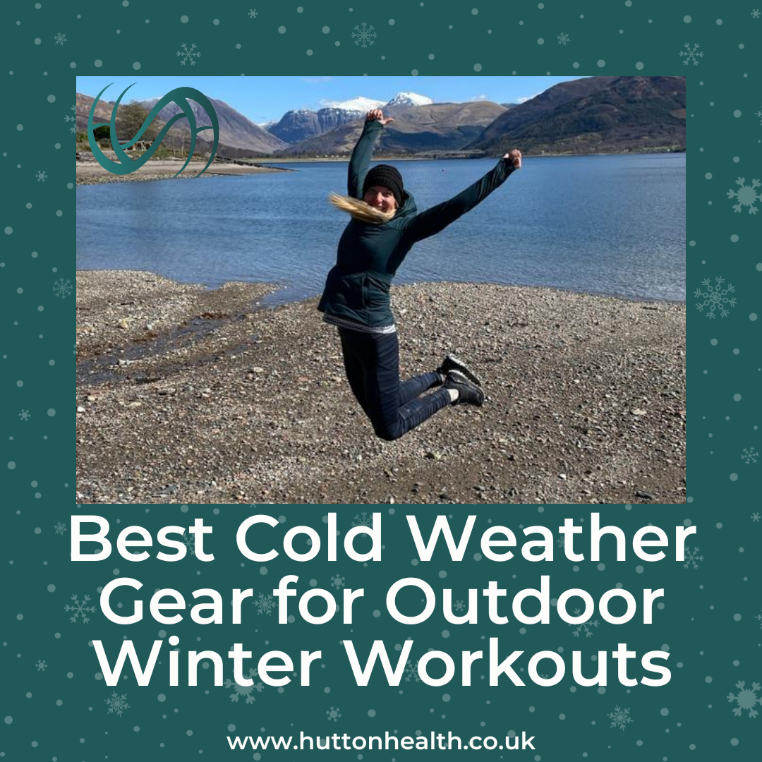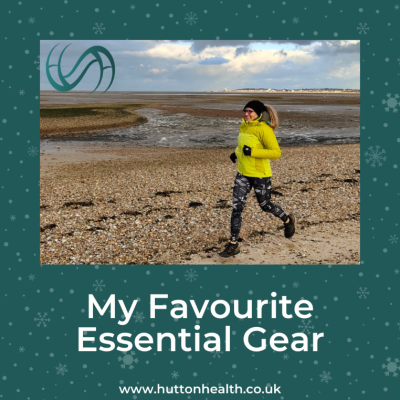Best Cold Weather Gear for Outdoor Winter Workouts
4th January 2024

(This post may contain referral links. Please read my disclaimer for more info.). As an Amazon Associate I earn from qualifying purchases.
Staying warm and comfortable during outdoor winter workouts is crucial to ensure your safety and enjoyment.
I am a person who struggles in the cold and needs to wear more layers than my friends who join me to exercise outdoors. I am often envious of their ability to stay warm despite the chilly temperatures!
If I don’t have cold weather gear to keep me warm for outdoor winter workouts, then I struggle with my motivation to exercise. As the saying goes, ‘There is no bad weather, just bad clothing for the weather!’
Over the years I have added some good quality pieces to my outdoor winter gear that has made exercising outside during the winter much more comfortable. It has seen me through bike rides in the Shetland Islands in the dead of winter, up to Everest base camp in the snow, and skiing across the Alps and the Canadian Rockies in frigid temperatures.
The best cold weather gear for outdoor winter workouts typically includes layers that help insulate and protect you from the cold, wind, and moisture.

Here's a list of some of my favourite essential gear to consider:
Base Layers:
- Moisture-Wicking Thermal Underwear: Start with a moisture-wicking base layer to keep sweat away from your skin. Look for materials like merino wool or synthetic fabrics.
- Long-Sleeve Shirt and Tights: opt for long-sleeve shirts and tights to cover your arms and legs for added warmth.
Berghaus has some great base layers that keep you warm and dry. Check out their selection here!
Insulating Layers:
- Fleece Jacket or Insulated Vest: These provide extra warmth without being too bulky. Fleece is lightweight and insulating.
- Down or Synthetic Insulated Jacket: For extremely cold conditions, a well-insulated jacket can make a big difference.
Sweaty Betty has a good selection of insulating jackets and vests. Check them out here!
Outer Shell:
- Waterproof and Windproof Jacket: An outer shell that's both waterproof and windproof will protect you from rain, snow, and biting winds.
Bottoms:
- Insulated Pants: Consider insulated pants or thermal tights for your lower body. Look for options that are breathable and waterproof.
Headwear:
- Beanie or Hat: A warm beanie or hat can help retain heat and keep your head warm.
- Neck Gaiter or Balaclava: These can protect your face and neck from the cold and wind.
Gloves:
- Insulated Gloves: Invest in insulated, waterproof gloves to keep your hands warm and dry.
Decathlon has a huge selection of gloves that fit various sizes and degrees of warmth. Check out their selection here!
Socks:
- Moisture-Wicking Socks: Layer your socks to keep your feet warm. Start with moisture-wicking socks and add insulating, thicker socks on top.
Footwear:
- Insulated and Waterproof Boots: Choose boots that are both insulated and waterproof to keep your feet warm and dry.
Accessories:
- Hand Warmers:
Disposable hand warmers can be placed in your gloves or pockets for added warmth.
- Sunglasses or Goggles: Protect your eyes from the cold wind and potential glare from snow.
Safety Gear:
- Reflective Clothing: If you're working out near traffic, consider adding reflective elements to your clothing.
- Headlamp or Reflective Gear: Ensure visibility if you're working out in low-light conditions.
Remember to layer your clothing, so you can adjust your outfit as your body temperature fluctuates during your workout. Also, be mindful of the conditions you'll be in – different activities and climates may require different gear.
It is important to remember the importance of hydrating well while exercising outdoors in the winter even when the temperatures are low.
Additionally, don't forget to protect your skin from the cold and wind by using moisturizer and lip balm.
Lastly, choose gear that's appropriate for your specific outdoor activity, whether it's running, hiking, skiing, or any other winter sport. Proper gear can make your winter workouts not only safe but enjoyable as well.
Dressing appropriately for cold weather exercise depends on the temperature and weather conditions.
Here's a general guideline for how to dress based on different temperature ranges:

4°C and Above:
Base Layer: Wear a moisture-wicking base layer to manage sweat and keep your skin dry.
Top: A long-sleeve moisture-wicking shirt should suffice.
Bottoms: Go for full-length leggings or running tights.
Outer Layer: A lightweight, breathable jacket is enough to cut the wind.
Headwear: A moisture-wicking beanie or headband may be necessary to keep your ears warm.
Gloves: Lightweight gloves can provide some protection for your hands.
Footwear: Consider using moisture-wicking socks and regular running shoes.

-4°C to 4°C:
Base Layer: Upgrade to a warmer, moisture-wicking base layer.
Top: A long-sleeve shirt and an insulating mid-layer like a fleece jacket.
Bottoms: Thermal running tights or pants.
Outer Layer: A thicker, windproof jacket.
Headwear: A warm beanie or headband.
Gloves: Insulated gloves.
Footwear: Consider insulated and waterproof running shoes or boots.

-12°C to -4°C:
Base Layer: Thermal and moisture-wicking base layers are essential.
Top: Layer with a thermal long-sleeve shirt and an insulated jacket.
Bottoms: Thick thermal running tights or pants.
Outer Layer: A heavy, insulated, and windproof jacket.
Headwear: A warm beanie or balaclava to cover your face.
Gloves: Insulated, waterproof gloves.
Footwear: Insulated, waterproof running shoes or boots, or consider using gaiters to keep snow out.

-18°C to -12°C:
Base Layer: Heavy-duty thermal and moisture-wicking base layers.
Top: Multiple layers, including an insulated jacket or down jacket.
Bottoms: Insulated and windproof pants.
Outer Layer: A highly insulated and windproof parka.
Headwear: A warm beanie and a balaclava.
Gloves: Heavy-duty insulated and waterproof gloves.
Footwear: Insulated, waterproof running shoes or boots with extra insulation.

-18°C:
Base Layer: Heavy-duty thermal and moisture-wicking base layers.
Top: Multiple insulating layers, including a down jacket.
Bottoms: Insulated and windproof pants.
Outer Layer: A high-quality, heavily insulated, and windproof parka.
Headwear: A warm beanie, balaclava, and a neck gaiter.
Gloves: Extremely insulated, waterproof, and windproof gloves or mittens.
Footwear: Insulated, waterproof boots with thick socks.
Remember that individual tolerance for cold varies, so adjust these recommendations to your comfort.
The key is to layer effectively, ensuring that you can add or remove clothing as your body temperature changes during exercise.
Also, keep in mind that you may need to experiment with different clothing combinations to find what works best for you in different temperatures and conditions.




